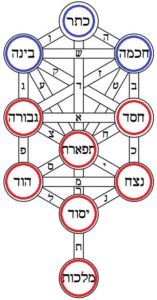This week’s parasha, Chayei Sarah, begins with the passing of Sarah, and Abraham’s securing of a burial plot for her. He specifically chooses Me’erat HaMakhpelah, a cave in Hebron, and pays a handsome price for it. Why was this place special and how did Abraham know that this was the right place to lay Sarah? The Zohar (I, 127a) comments that Abraham saw a vision of the Garden of Eden at that spot and, when he entered the cave, found Adam and Eve buried there. The Zohar suggests that this area was once the Garden of Eden!
It would definitely make sense for the Garden of Eden to be in the Holy Land. When Adam and Eve were banished from the Garden, the Torah says they lived east of it (Genesis 3:24). Cain, too, when banished, fled east—and there built the first city (Genesis 4:16-17). Since this city was in Mesopotamia, which is directly east of Israel, the implication is that Eden was in the Holy Land. Israel is called tabur ha’aretz, the “navel of the Earth” (Ezekiel 38:12), and is described in more mystical texts as the very centre of the entire universe, the point of origin of Creation.
Having said that, the Torah also says that Eden was locked up after Adam and Eve’s error, and God placed angels to guard its entrance (Genesis 3:24). What happened between that time and the time that Abraham found it? The only explanation that comes to mind is that Eden was destroyed during the Great Flood. Yet, the Midrash (Beresheet Rabbah 33:6) presents one opinion that the Land of Israel was not affect by the Great Flood! The proof is from Ezekiel 22:24, which says that Israel “was not cleansed, nor rained upon in the day of fury.”
This solves another problem: where did the dove that Noah sent get an olive branch? The Midrash says it got the branch from Israel, which miraculously did not experience the Flood. Some hold that Israel did experience the Flood, just that it did not rain directly upon the Holy Land; water flowed in from surrounding lands. Finally, the Midrash presents an opinion that the dove got the olive branch directly from the Garden of Eden! This suggests Eden was not destroyed by the Flood.
And then there are altogether different opinions regarding the location of Eden. Continue reading →

